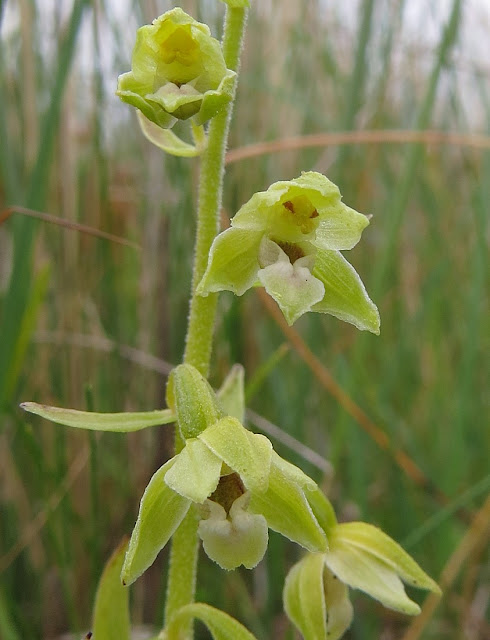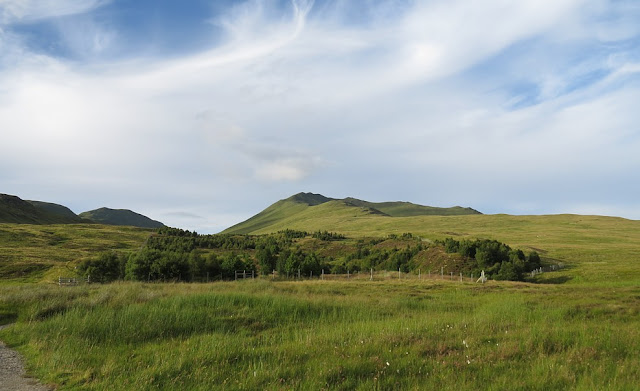Alpine Penny-cress - Thlaspi caerulescens
Pyrenean Scurvygrass- Cochlearia pyrenaica
Mountain Pansy - Viola lutea
Monkey Flower Hybrid - Mimulus sp.
Blood Drop Emlets -Mimulus luteus have been known to grow here but I think these are its hybrid with Monkeyflower.
In the wooded area an orchid called 'Tyne Helleborine' grows.
'Tyne Helleborine' isn't an official name for it and it doesn't have a separate scientific name from Dune Helleborine of which it is a variety (probably) It is basically an inland version of Dune Helleborine and as it is often found along the River South Tyne it as acquired the name Tyne.
Tyne Helleborine - Epipactis dunensis var tynensis.
A week later we were in Northumberland again on our way to Scotland and took the opportunity to pop over to Lindisfarne (Yes, I know you don't just pop over to Lindisfarne, it's miles out of the way!) because another Dune Helleborine was in flower there. The Lindisfarne Helleborine, which unlike the 'Tyne Helleborine' not only as an official scientific name it has been promoted from a subspecies to a separate species which is endemic to Lindisfarne. Don't ask me why? (although I think it's all in the DNA).
The Lindisfarne Helleborine is small, pale green and blends into the vegetation. It's pretty difficult to find even when you know you're in the right area. We were a little on the late side and could only find one plant which looked in good condition. Unfortunately from a photography point of view the plants' foliage tends to brown off before the flower spikes are fully open.
Lindisfarne Helleborine - Epipactis sancta
Autumn Gentian - Gentianella amarella ssp septentrionalis
Seaside Centaury - Centaurium littorale.
Northern Marsh Orchid - Dactylorhiza purpurella
There's an awful lot of the awful Piri-piri Bur. I had to throw my socks away!
The fine sediment between the cobbles is contaminated with heavy metals
derived from mining activity upstream, particularly lead, zinc, cadmium
and barium - See more at:
http://www.nwt.org.uk/reserves/williamston#sthash.69kO9nmC.dpuf
The fine sediment between the cobbles is contaminated with heavy metals
derived from mining activity upstream, particularly lead, zinc, cadmium
and barium - See more at:
http://www.nwt.org.uk/reserves/williamston#sthash.69kO9nmC.dpufand as an interesting assemblege of




























































